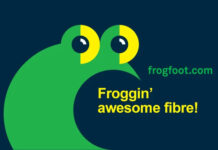An effective content strategy begins and ends with excellent copy. Whether your goal is lead generation, sales conversion or brand-building, what you say and how you say it is the most powerful way to engage with your audience. Here are 10 tips on how to escalate your copywriting from good to great:
It All Begins With Research
Communicating from a position of knowledge is essential to weave an authentic, interesting story. Information unlocks limitless possibilities. You can never be too well-versed in your subject matter; endeavor to become an expert in the topic you’re writing about. Legendary copywriter Gary Bencivenga said:
“The best copywriters are the most tenacious researchers. Like miners, they dig, drill, dynamite, and chip until they have carloads of valuable ore. John Caples advised me once to gather seven times more interesting information than I could possibly use… Research is the infallible cure for writer’s block.”
Brand Identity is Everything
Every brand has their own unique voice, style, and unique selling points, and this should be cultivated in every single marketing execution to speak to your target audience’s needs and desires. Consistency is key: a sharply defined personality is the common thread that creates the consumer’s perception of the brand across contexts. A crystal-clear brand identity differentiates yourself from the competition to secure a greater market share.
It’s All in the Headline
Headlines are devised to catch consumer’s attention. If your headline entices a consumer to read more, the battle is pretty much won. In order to craft a powerful headline, write the body copy first and then pick the strongest phrases to use as headlines and subheadings. Simplicity is key: straightforward is always more effective than overly clever. Provoke some sort of emotional response in your reader to grab their attention and urge them to find out more. While it can be effective, avoid using ‘clickbait’ headlines. Your brand is better than that.
Keep it Simple
When in doubt, keep it simple. This doesn’t mean compromising on jargon or technical ability, it means keeping your message as concise as possible to provide your consumer with an immediate understanding of what you’re offering. Never assume knowledge; explain concepts as if readers are learning them for the first time.
Tell a Story
The magic of marketing is in the storytelling. Taking a consumer on a journey captures their attention, elicits an emotional response and draws them into a world they want to be a part of. Creating a narrative makes for far more interesting content, and does not come across as a hard sell.
Speak Your Customer’s Language
A sure-fire way to appeal to your target audience is by using the language that they use every day. Communicating in colloquial language develops affinity and trust for your brand because they recognise themselves in your words. The language you use is a relationship-building exercise, creating connections between your brand and their consumers.
Resonate With Your Audience
Create interest and buy-in for your brand by appealing to your target audience’s emotions. While your product offering or service may be relevant to your consumer, they are ultimately won over through the resonant quality of what you’re offering. Consumers are geared to shop on wants rather than needs, so speaking to their desires and deepest emotions persuades them to connect with your copy and ultimately what you’re selling.
Work an Angle
The power of persuasion is in the positioning of a product or brand. Creating a unique or unusual angle stimulates curiosity and captures attention. In a sea of competitors, a unique position is the hook you need to pique consumer’s interest.
Open With Your Strongest Point
‘Save the best for last’ definitely does not apply to skillful copywriting. Most consumers are more likely to read the beginning than the end, therefore it is more persuasive to introduce your best points first. The strongest points capture attention best, so it makes sense to lead with them. This formulation also provides an element of instant gratification for readers: they know exactly what value is in it for them before they take the time to read ahead.
Include a Call to Action
If you don’t specifically ask people to do something, chances are they won’t do it. Everything you write should either lead or close with a call to action to convert consumers. Calls to action typically offer something of value to the consumer, and is both relevant to and resonant with the target audience.
About Lauren Crooks, Copywriter at Condriac:
Lauren is a psychology graduate and qualified life coach with a passion for words, people and all things digital. Her love affair with all things advertising began in 2015, where she undertook the role of traffic manager in a digital agency. Her true strength lay in copywriting and creative strategy and she naturally progressed into a conceptual role. She is Condriac’s resident copywriter and loves collaborating with colleagues to develop creative, strategic solutions for clients.




















































































